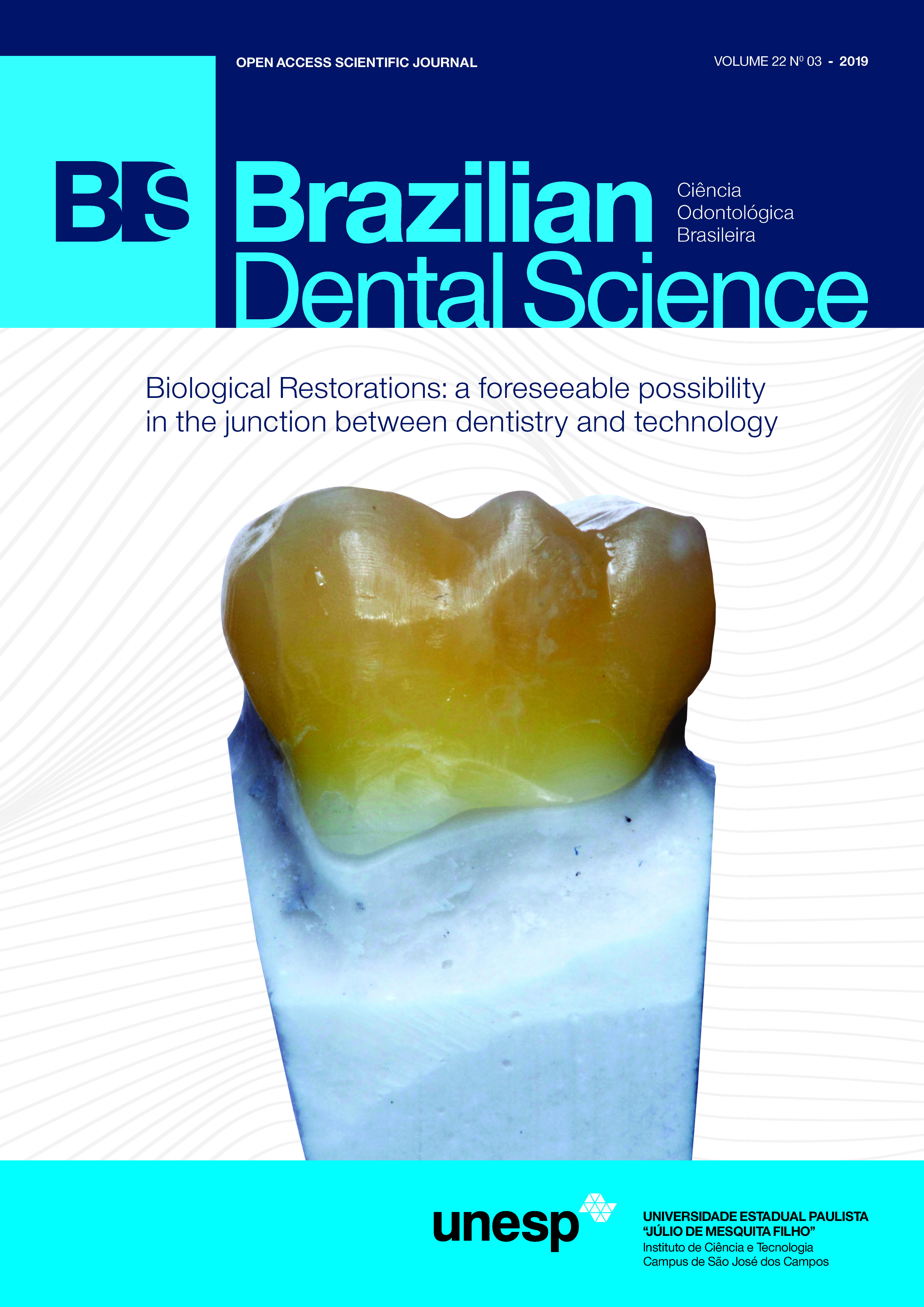The comparison of the rate of apical displacement in curved root canals using Neoniti and RaCe files by cone beam CT Scan
DOI:
https://doi.org/10.14295/bds.2019.v22i3.1748Resumo
Background and aim: There is a high prevalence of root canal transportation in the teeth with the curve. effect of root canal transportation on the success of root canal therapy of tooth is negative and there is no study about comparing RaCe and Neoniti files in root canal transportation. The aim of this study is assessment and comparing two different RaCe and Neoniti files to determine transportation error in various parts of root using CBCT assessment and comparing them with each other.
Method: In this experimental study 50 extracted mandibular molar teeth selected. Teeth were divided randomly into two groups i.e. 25 teeth threated with RaCe file (first group) and 25 teeth threated with Neonitu files (second group). in this study to measurement thickness of dentine in the scan ,before and after instrumentation at the same time we used axial images that obtain from NNT viewer 6.1.0 software .
Findings: in the first group ,The mean tooth transportation in 5 mm of apex was 0.15 and in the second group The mean tooth transportation in 5 mm of apex was 0.18 mm that there was no statistically significant difference in canal transportation between RaCe and Neoniti files in five millimeters distant from apex area (p=0.492) and the mean transportation from 9 mm of apex was 0.14 in the second group that There was no statistically significant difference in canal transportation between two groups (p=0.911).
Conclusion: The results indicated that there was no significant difference of tooth transportation between two file systems in 3, 9, 7, 5 and 11mm from the apex and both files were safe.
Downloads
Downloads
Publicado
Como Citar
Edição
Seção
Licença
TRANSFERÊNCIA DE DIREITOS AUTORAIS E DECLARAÇÃO DE RESPONSABILIDADE
Toda a propriedade de direitos autorais do artigo "____________________________________________________________________" é transferido do autor(es) para a CIÊNCIA ODONTOLÓGICA BRASILEIRA, no caso do trabalho ser publicado. O artigo não foi publicado em outro lugar e não foi submetido simultaneamente para publicação em outra revista.
Vimos por meio deste, atestar que trabalho é original e não apresenta dados manipulados, fraude ou plágio. Fizemos contribuição científica significativa para o estudo e estamos cientes dos dados apresentados e de acordo com a versão final do artigo. Assumimos total responsabilidade pelos aspectos éticos do estudo.
Este texto deve ser impresso e assinado por todos os autores. A versão digitalizada deverá ser apresentada como arquivo suplementar durante o processo de submissão.




























